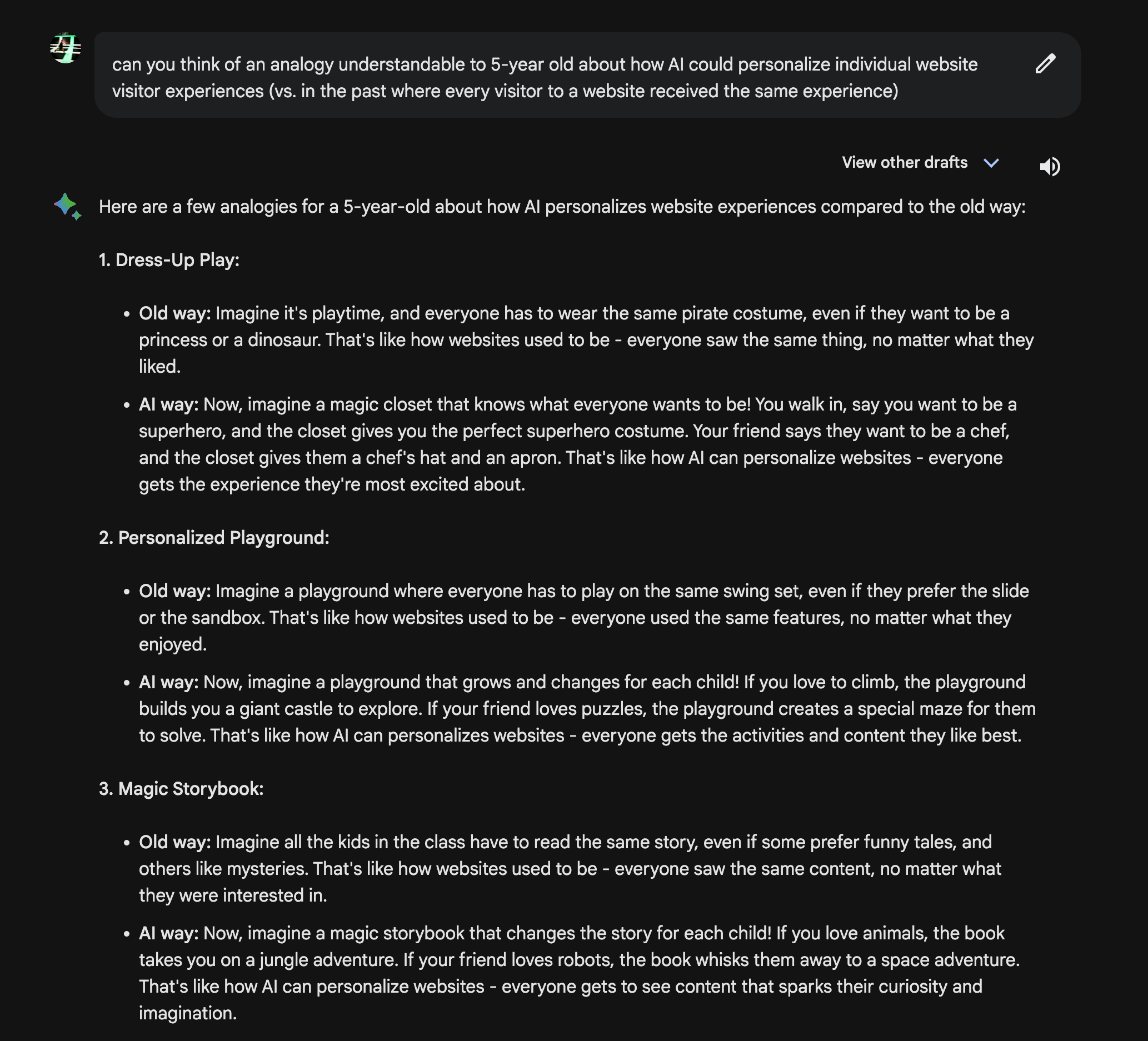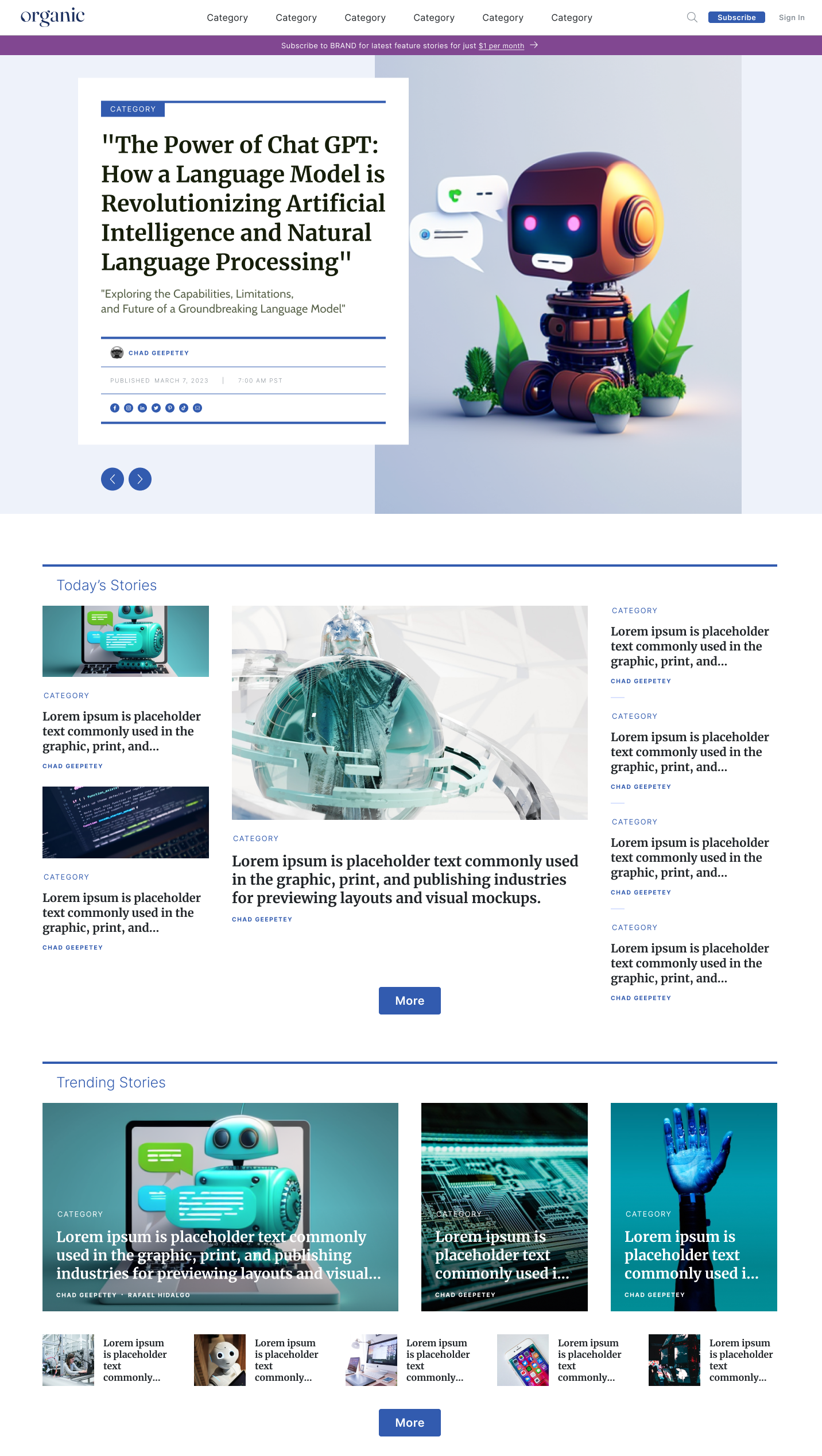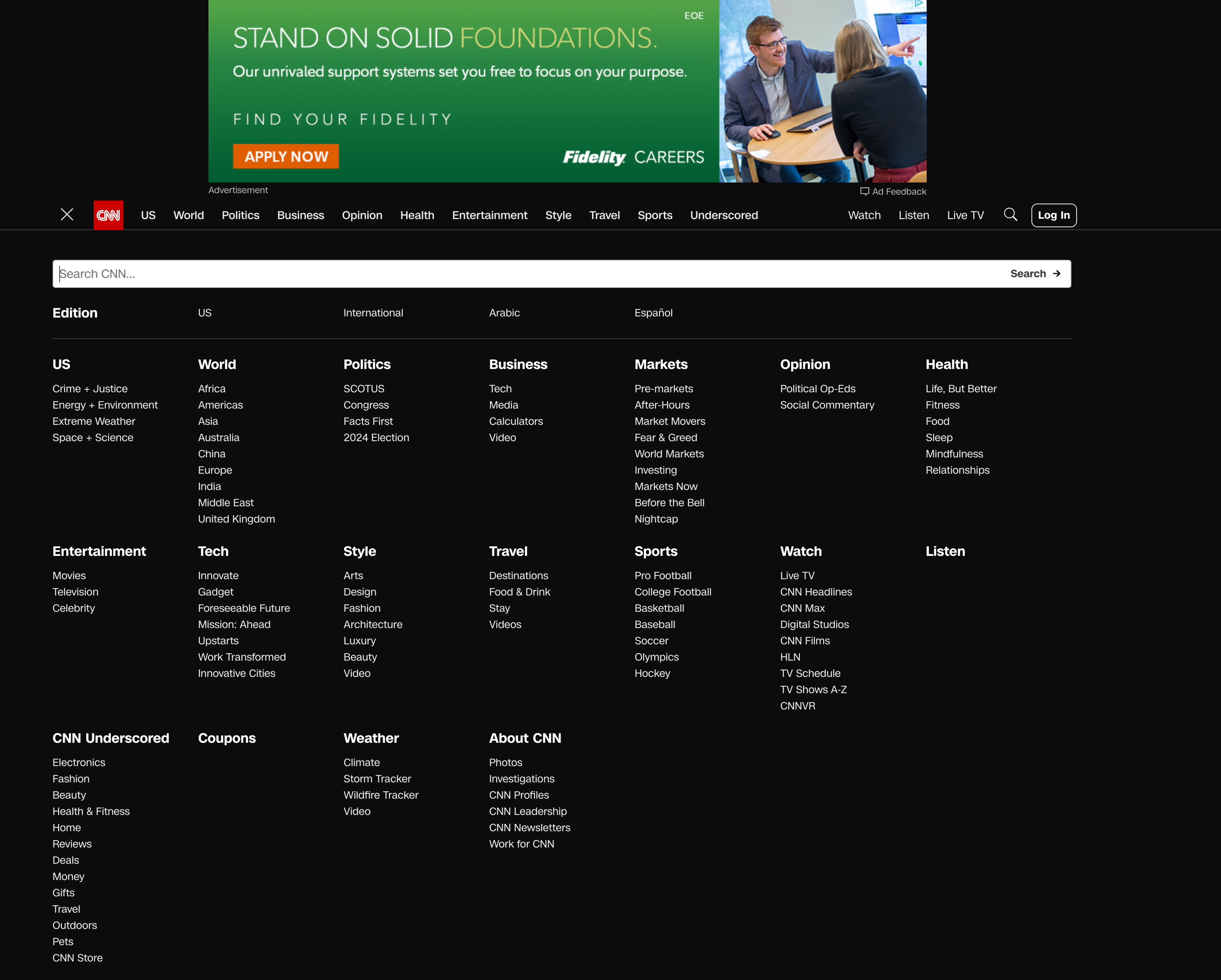Share this
Enhancing User Experience: AI-Powered Website Personalization
by Kane Russell on Jan 24, 2024 5:29:54 PM
In this article, we explore the power of AI to enhance end user experience by personalizing each individual's website visit. Key goal being: how do we use AI to increase average session time and engage users more effectively by serving them the best and most relevant content from a site's vast library.

Apparently AI thinks that "website personalization" comes down to invoking more color pink — AI (of course) wouldn't be the first!
Defining "User Experience" For Websites
To state bluntly, user experience (or "UI/UX," stands for user interface/user experience) determines ultimate success for website(s) with millions of monthly pageviews, and those websites' owners.
To be clear for editorial-championing readers, quality and E-E-A-T of content is the business in millions of monthly pageviews, period. You have nothing without content (but in the end content cannot engage someone who never sees that content).
Thus, user experience refers to how website visitors perceive and interact with a website's content, according to the a smorgasbord of characteristics, including content quality, site speed, design, navigation, usability, likability, and configuration of revenue-generating elements for ads, affiliate, lead gen, subscriptions, etc.
A positive user experience registers in website analytics platforms in the form of increased engagement, higher conversion rates, longer average session times, and higher revenue per visit. On the other hand, a poor user experience registers as high bounce rates, low user retention (e.g. declining direct traffic), and declining referrals from search, syndication, etc.
Poor user experiences abound, but suffice it to say that a website needs to avoid the chumbox reputation that comes with no viewable editorial content (i.e. only ads or revenue-generating elements). Not only does the poor content quality churn users, but it also churns syndication and search platforms who don't refer their audience to sites with longer loading times and glitchy rendering.
To optimize individual user experiences for an audience via AI, website owners need to first understand their target audience and its preferences — both from a qualitative as well as quantitative perspective — which accommodates a vision for audience of the past/present/future (editorial's perspective has to be invoked in any/all of these discussions and outcomes).
But it's inside these types of analyses that AI-powered website personalization comes into the foray. By leveraging AI algorithms and machine learning, websites can potentially tailor the delivery of their content, design, and functionality at the individual user level, creating a personalized and engaging experience for every single visitor.
Why AI for Website Personalization
From what we can tell AI will eventually play a crucial role in website personalization; it's a question of when.
AI can analyze vast amounts of data and identify patterns and trends that humans would otherwise miss. Behind the scenes, traditional personalization methods too often rely on manual segmentation / rule-based approaches, which are time-consuming and limited in their effectiveness — not every company has the same resources as a Forbes-level enterprise (related: the bulk of companies in website publishing are still OK).
That's not to say that website owners can instantly start relying on AI to be an expert website designer — VERY far from it. Instead, think of AI's role as that of a 1000 interns who can pay attention to each individual website user and what their individual website behavior tells you about what they want.

In essence, AI-powered website personalization will use machine learning and algorithmic optimization to collect and analyze user data, taking into account browsing behavior, demographics, and preferences. This data will then be used to create personalized content experiences in real-time, i.e. delivering relevant content, recommendations, and offers at the individual user level.
(nb: while never creating content for the brand itself)
Remember, content prompts/suggestions can come via pop-up, in-line content "round-ups," footer-content placements, sidebars, HelloBar-esque header drop-downs etc. By partnering with AI to understand individual users' needs and interests, website owners will be able to increase engagement and encourage users to stay longer on their site (which is to say: "increase average session time").
Leveraging AI for Dynamic Content Recommendations
One of the key ways AI can increase average session time on a website is through dynamic content recommendations. AI algorithms can analyze user behavior and preferences to predict what content a user is most likely to be interested in. This can include personalized product recommendations, related articles or blog posts, and targeted advertisements.
For example, AI can serve specific, real-time content recommendations to individual visitors via targeted round-up modules including "Today's Top Stories," "Trending Articles," "Most Comments," etc.:

By serving to the user relevant and personalized content recommendations, websites will keep users engaged, as well as encouraging them to explore more pages and spend more time on the site. The increased average session time will demonstrate the improvement in overall user experience, and can be used to measure project ROI via cross-channel Analytics.
Utilizing AI for Real-Time User Engagement
In addition to content recommendations, AI can also be used for real-time user engagement. AI-powered chatbots or virtual assistants can provide personalized assistance to users, answering their questions, guiding them through the website, and addressing their concerns. These AI-powered interactions can simulate human-like conversations and provide a seamless and personalized user experience.
By utilizing AI for real-time user engagement, websites can create a more interactive and engaging experience for users. This can help increase average session time, as users spend more time exploring the website and interacting with AI to find a site's most valuable and important content.

For example: one of the easiest things in the world is finding a website publisher who would like to improve the engagement of their site search module. AI makes a ton of sense for site search, as AI can be trained to be an expert on the content published/housed within a site, and how to serve it to a user on a personalized level (so that they ultimately spend more time during each session).
Measuring the Success of AI-Powered Website Personalization
To measure the success of AI-powered website personalization, website owners can track various metrics but should ultimately focus on increasing average session time (while controlling for faster page load speed).
Other metrics include bounce rate, conversion rate, and user satisfaction — i.e. all the online publishing metrics used to gauge how much and many monetizable content blocks should exist in-line and otherwise with the editorial team's E-E-A-T laden output.
By A/B testing/comparing average session time of visitors to static websites vs. AI-powered personalized visits, website owners can assess the exact value of how AI grows audience and earnings. Because AI is helping an individual user find existing, valuable content, rather than generating content (or even authors), the ROI on AI will be much higher.
It's of course important to regularly analyze and optimize AI-powered personalization strategies based on the collected data and feedback loop in place. By continuously focusing on the end user experience, websites can ensure that AI is effectively deployed to increase average session time and help publishers with millions of monthly visitors achieve and exceed their desired audience and earnings goals.
Share this
- June 2024 (2)
- May 2024 (3)
- April 2024 (1)
- March 2024 (4)
- February 2024 (1)
- January 2024 (11)
- December 2023 (1)
- November 2023 (2)
- October 2023 (3)
- September 2023 (3)
- August 2023 (4)
- June 2023 (1)
- May 2023 (3)
- March 2023 (4)
- February 2023 (5)
- January 2023 (3)
- December 2022 (1)
- November 2022 (2)
- October 2022 (2)
- September 2022 (1)